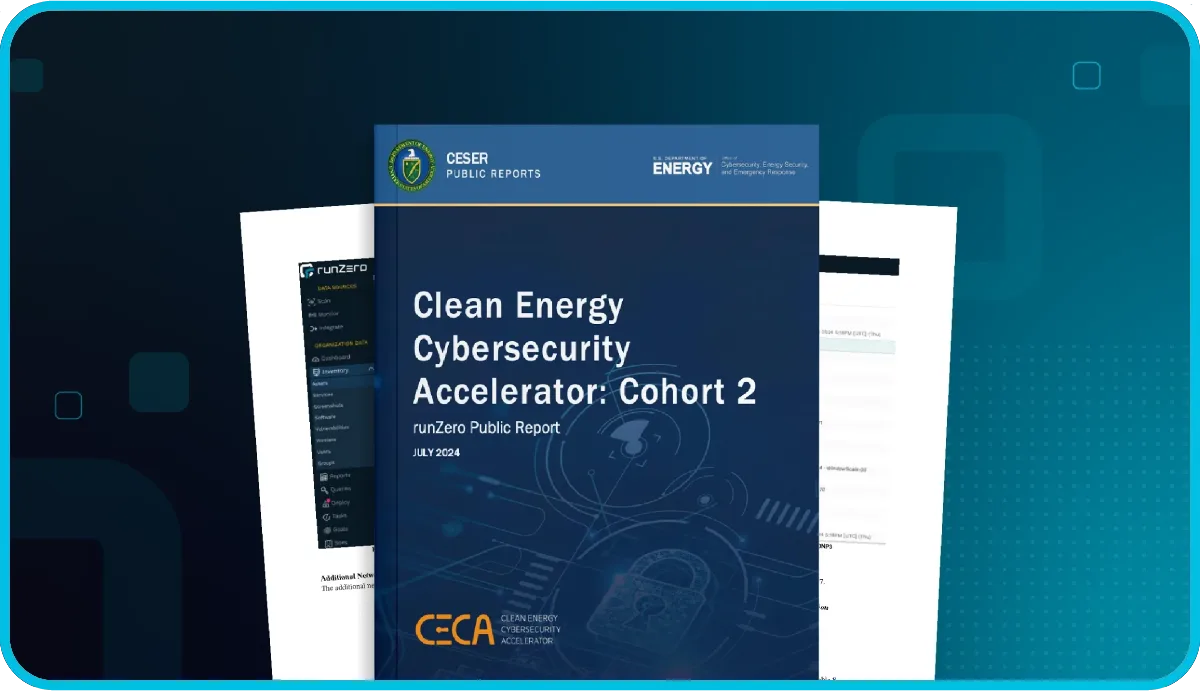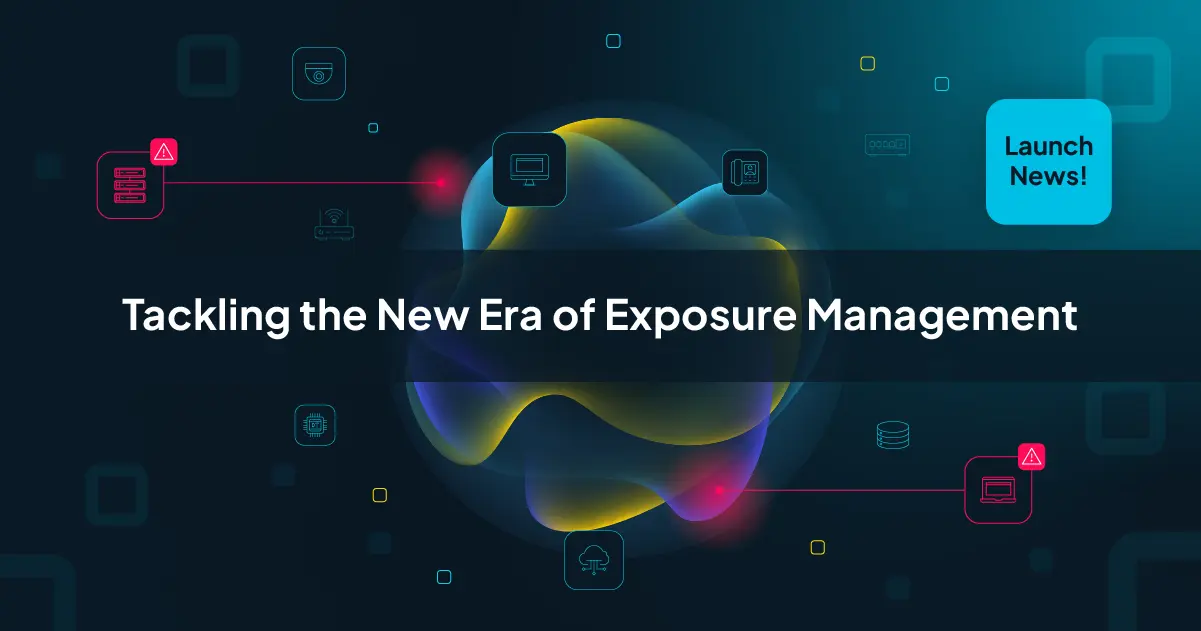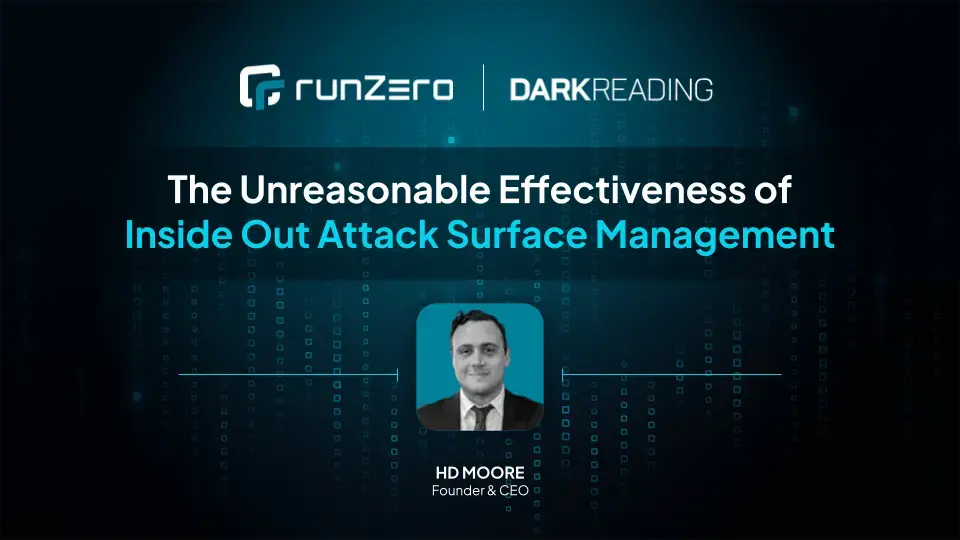Vulnerability scanning plays a crucial role in any enterprise security program, providing visibility into assets that are unpatched, misconfigured, or vulnerable to known exploits. Customers tell us that they can take action on their vulnerability scan results most effectively when paired with comprehensive asset and network context.
runZero’s vulnerability management integrations let Enterprise users:
- Add asset and network context to their vulnerability data
- Identify gaps in vulnerability scan coverage
- Expedite response to new vulnerabilities
Adding context to your vulnerability data #
Just like the other inventory views, the vulnerability inventory supports the use of queries to filter your results. You can craft a query using the supported tags, Boolean operators, and numeric comparison operators. A query like this one will list the critical vulnerability results found on your Cisco hardware: hw:Cisco AND severity:critical. Try this one to identify vulnerabilities with a CVSSv2 score of 6.5 or more on EOL assets: os_eol:<now AND cvss2_base_score:>6.5.
Some organizations find it helpful to prioritize remediating vulnerabilities on public-facing assets. With runZero you can easily find them by querying your vulnerability results using fields related to IP addresses. Not only can you use filters like cidr: to include or exclude particular address ranges, but you can also use has_public:t to find results on assets with public IP addresses. Just like in the other inventories, these query parameters can be combined to find exactly the results you need.
Closing vulnerability scan gaps #
Being able to track down assets impacted by newly disclosed vulnerabilities is great, but how can you be sure you're scanning everything by addressing gaps in your scan policies? As a starting point, you can evaluate the assets that have been identified by runZero but are not included in your vulnerability results. You can leverage the source column to identify assets that are known by runZero but are not included in your vulnerability scan results. Try out this query in your asset inventory to see which IP addresses you may not be vulnerability scanning (if you changed the minimum severity setting in your integration configuration, this may not be as accurate for you): source:runZero AND NOT source:[VM vendor]. Swap [VM vendor] with the name of your integrated vulnerability management vendor in any query to find the right results:
- Qualys:
source:runZero AND NOT source:qualys - Rapid7:
source:runZero AND NOT source:rapid7 - Tenable:
source:runZero AND NOT source:tenable
The same logic can be used to find high-value assets or subnets that are not covered by your vulnerability scanning. If you've been using sites or tags to organize your assets, you could use the site: or tag: query fields with AND NOT source:[VM vendor] to find matching assets that have not been vulnerability scanned. You can also search for services or protocols that might be a cause for concern, such as protocol:smb AND NOT source:[VM vendor] to find SMB services on assets that haven't been vulnerability scanned. The query logic also supports filtering by IP address ranges or subnets, meaning you could use cidr:192.168.30.0/24 AND NOT source:[VM vendor] to find unscanned assets in that subnet.
Since many vulnerability management solutions support importing a line-delimited list of IP addresses into a scan policy, you could use the results of these queries as a scan range. Simply export them to a CSV from the runZero Console then copy the address column into a text file. Or, if you'd prefer to use the export API, the following command will pull the results into JSONL format, filter for the address field, and clean up the extra characters. Just switch [VM vendor] in the URL to the right value and you'll be left with a line-delimited text file of all the addresses that you might not be vulnerability scanning.
curl --location --request GET 'https://console.runzero.com/api/v1.0/export/org/assets.jsonl?search=source%3A%22runzero%22%20AND%20NOT%20source%3A%22[VM vendor]%22&fields=addresses' \
--header 'Authorization: Bearer <EXPORT API TOKEN>' \
| jq -r ".addresses[]?" | sort | uniq > IPsNotVulnScanned.txt
Expediting your response #
When the latest vulnerability hits the news, you can use runZero in many cases to quickly check for impacted assets. runZero’s Rapid Response series is a great way for readers to stay on top of breaking security news and track down affected assets. The ability to query across vulnerability and asset details can help you find impacted assets while you're getting your vulnerability scanner ready for a full analysis. This is just one example of how a comprehensive asset inventory can work in tandem with your vulnerability management tools.
runZero’s rich datasets of devices, manufacturers, and operating systems, coupled with our highly-tuned scanning and processing logic, provides high quality and high confidence asset and service fingerprints. Pulling your vulnerability data into runZero lets you leverage our extensive fingerprinting capabilities to enrich your vulnerability scan results with the asset and network data being gathered by your runZero Explorers, letting you find vulnerabilities impacting specific operating systems, hardware, or services.
With the data already collected by your runZero Explorers, you can quickly identify vulnerable or exploitable assets based on various datapoints, like vendor name and service version. For example, you can use the following query to find BIG-IP assets that might be vulnerable to authentication bypass without having to run a new scan.
_asset.protocol:http AND protocol:http AND (service.vendor:F5 OR html.title:"=BIG-IP%" OR html.copyright:"F5 Networks, Inc" OR http.body:"/tmui/" OR favicon.ico.image.md5:04d9541338e525258daf47cc844d59f3)
When updated vulnerability scan data is available, you can use queries to find results that match a specific CVE or scan plugin ID to better prioritize your remediation efforts. For example, this query can help you find external-facing assets with vulnerable Log4Shell installations: has_public:t AND cve:CVE-2021-44228.
















